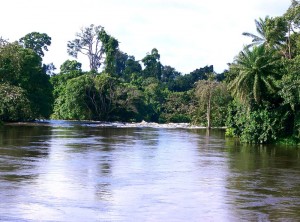- The country’s 1,200 km length, proximity to the sea and topography give it a varied climate with wide differences in rainfall and vegetation. The maximum rainfall of 10,000 mm occurs in the equatorial climate zone in the south, and the minimum of 500 mm in the extreme north on the edge of the Sahara. The average annual rainfall is about 1,684 mm.
- Agriculture is the backbone of Cameroon’s economy, accounting for about 41% of GDP and 55% of the workforce. Irrigation has contributed substantially to productivity, making cultivation possible during the dry season. In 2000, irrigated area of about 224.5 km2 corresponded to around 8% of the potentially irrigable area.
- Cameroon has a dense network of rivers, most of which arise on the central Adamawa plateau and flow north or south. These provide it with abundant water resources in relation to current demand. The six main basins are Sanaga, Sanaga West, Sanaga South, Benoue, Congo and Lake Chad.
- Average rainfall has been declining since the 1950s. In the last three decades it has decreased by about 5%. Reduced flow rates have been more pronounced in areas with a Sahelian climate, where reductions ranging from 15% to 25% have been recorded. These changes have led to increased desertification in the north and a falling water table due to reduced recharge. In addition, previously permanent wells are drying up late in the dry season.
- Although Cameroon has sufficient water resources, choices in water use have started to affect water availability and ecosystems. For example, plantation of eucalyptus in the western highlands to provide firewood and construction material induced a very high evapotranspiration rate, which has altered the ecosystem and greatly diminished groundwater recharge and the flow rate in the area.
- The country’s estimated hydroelectric potential is 35 GW. Even with only around 2% of this potential developed, hydroelectricity accounts for about 97% of electricity generation in Cameroon
The section “Did You Know…?” is taken from the 3rd World Water Development Report “Water in a Changing World“.


